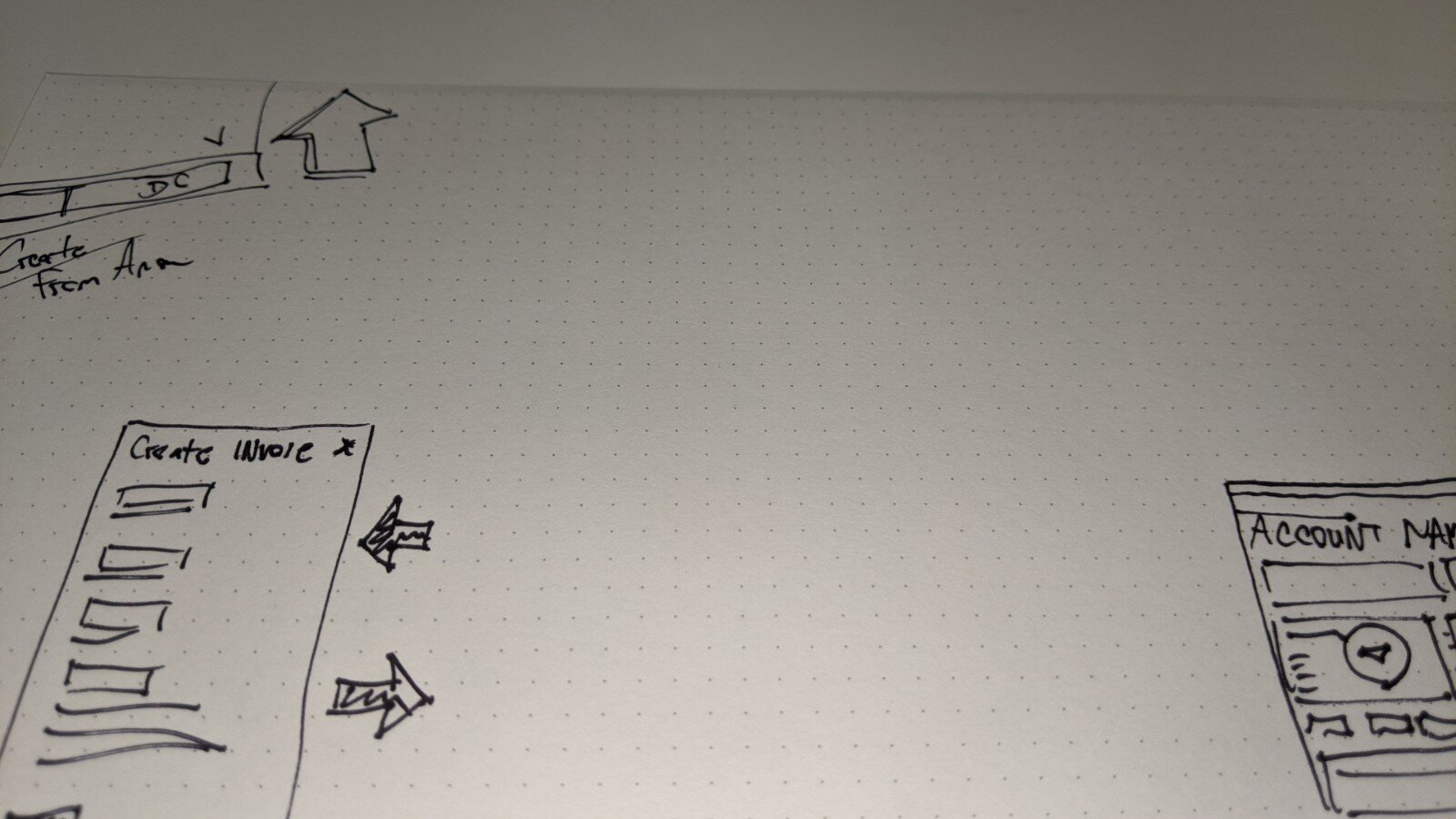
Account Switching Within the Mobile App
Users of the Rackspace mobile app and have multiple accounts need the ability to add those accounts, switch between them, and remove from the app.
My Role
I was involved in all phases of the project, from organizing research, creating user stories, user flows, wireframes and final designs. I worked with product teams, front end devs, engineers and research teams from beginning to end..
The Problem
Research had revealed our customers wanted additional functionality in the portal to meet their business needs. In addition, CBUI was lacking several industry standard functions that were supported by our competitors. Normally I would start with a heuristic analysis but we had quite a bit of research done in previous phases so I started there.
Build. Measure. Learn.
I used Lean UX principles in the development of the mobile account switcher to focus on users and their needs at each phase of the design process:
Formulate and validate the hypothesis.
Conduct early user testing with rough sketches to unveil unexpected pain points.
Define MVP.
Focus on research results to create features that users really need.
Externalize the work using sticky notes, printouts or sketches.
Research
Based on my work on other Rackspace projects i hypothesized that users of the mobile app would have similar needs with regards to multiple accounts and switching between those accounts but i needed to be sure.
I conducted a user survey within the mobile app to measure interest in switching between multiple accounts. The short survey about the number accounts, products and tasks, garnered 68 responses.
Personas
I mapped the user research to three personas and referred to them throughout the entire product development process.
Each persona had a scenario that identified a realistic goal the user might have when working with this app.
The information about each persona focused on its goals and frustrations with the product as well as their interaction with it, which drastically affected my design decisions.
Focussing primarily on the role of the persona helped me to understand the mental and emotional state of the user at the moment of the interaction. This process has significantly influenced the development of important design decisions and key functionalities.
User Flow
I created user flow diagrams to map every step of the user interaction required to achieve the main goal of the user:
"As a user with multiple accounts, I need to store those accounts in the mobile app so that I don’t have to manually log in to each one.”
“As a user with multiple accounts, I need to quickly switch between my accounts so that I can check the status.”
“As a user with multiple accounts, I need to remove accounts I have added because I no longer need them stored in the mobile app.”
Ideating Solutions
At the beginning of the ideation phase, the main function of this app was simply switching accounts, but that the idea quickly outgrew that initial intent. I sketched various solutions and did some hallway testing to find the best way to integrating the newly defined functions.
At this phase of the design process, early feedback was crucial to eliminate pain points and enhance usability and existing features.
Prototyping
I had three concepts that I wanted feedback on so I turned my revised sketches into gray scale interactive prototypes in Sketch. I defined UI elements, design patterns and visual hierarchy.
I tested the prototypes with seven users remotely, giving them basic tasks and documenting the results. In general, participants could navigate easily through all three options and enjoyed the simplicity; but testing also detected some pain points:
Findings:
Users wanted the ability see MFA codes from the splash screen
Users preferred the quick nav over all others
Users wanted the ability to nickname accounts
The Final Product
Current Usage
Reduction in customer support calls and tickets for customers who were unexpectedly bumped up to a new service tier because they were unable to effectively monitor their usage costs or set thresholds.
Reduction in credits given to customers over those same issues
CEI score improvement
Changes from previous invoice
Reduction in customer support calls and tickets with specific charge related questions
Invoice Management
Reduction in time by Account Managers creating custom invoices
Reduction in credits given to customers because of human error
CEI score improvement

